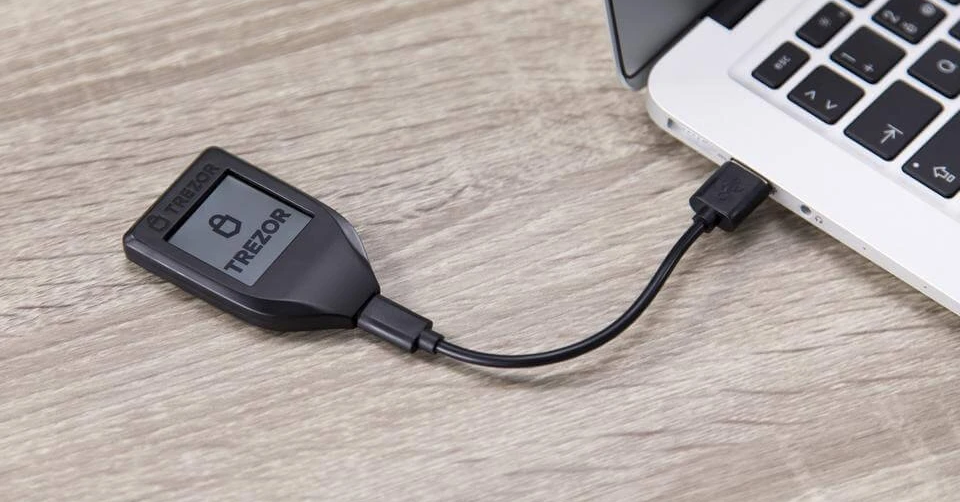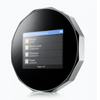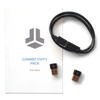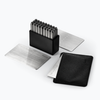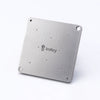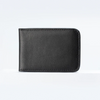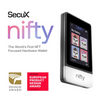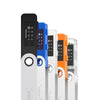How Hardware Wallets Work And Why They Are Secure
What is a Hardware Wallet?
Investing in cryptocurrency requires you to use a wallet to store and manage your assets. Wallets can come in the form of websites, downloadable software applications, or actual physical devices. Wallets store private keys. Private keys are what allow you to unlock and own cryptocurrency on the Blockchain.
A hardware wallet is a physical device that is used to store cryptocurrency assets. It is the most secure form of wallet available.
These devices plug into a computer or mobile device via a USB port and allow you to buy, sell, and exchange cryptocurrency without ever exposing your assets to hackers or online surveillance.
This article explains how hardware wallets work and why they are the safest and most effective way to store and manage your cryptocurrency assets.
Hardware Wallets are safer than Online Wallets and Desktop Wallets
Cryptocurrency is most often bought from online exchanges that accept fiat currency or other cryptocurrency. These exchanges, such as Coinbase and Gemini, also serve as online wallets, and when you purchase cryptocurrency, your funds will be available to spend and manage with the built in wallet of the exchange you are using.
While exchanges are great for buying and trading cryptocurrency, they are not effective long term storage solutions. Exchanges are targets for remote hacks. Furthermore, exchanges do not give you access to your private keys.
Private keys are what give you ownership of the cryptocurrency sent to a public address. A transaction is when cryptocurrency is sent from one public address to another. All of these transactions are recorded and stored on a Blockchain; a collective and decentralized network and ledger of transactions.
Every cryptocurrency public address has a private key associated with it. As long as you and only you have the private key of a public address, you will have ownership of the assets sent to that public address.
Exchanges store your private keys for you, which means if the exchange becomes unavailable or hacked, you could lose access to your cryptocurrency. This is why it is recommended that you send your assets to a more secure wallet, after purchasing them from an exchange.
Software wallets that are downloaded to your desktop are much safer than the online wallets of exchanges. However, they are not immune to remote hacks. When you use a software wallet, your private keys are stored offline on the hardware of your computer. However, your computer is still connected to the internet , and there are malicious programs that could possibly obtain your private keys from your computer without you knowing.
This is why hardware wallets are the safest method of securing your crypto and the only viable method for serious investors . They store your private keys completely offline, on a device that never connects to the internet. Even if you were to plug your hardware wallet into a computer infected with a virus, your private keys would remain completely secure.
Your private keys, stored on your hardware wallet, use mathematical formulas to generate “public keys” which then generate public addresses for you to use when buying, selling, or exchanging cryptocurrency. These public addresses are then sent through the USB cord to your computer and the outside world. This ensures that your private keys never leave the device.
Public addresses come from private keys, but obtaining private keys from a public address is not possible. The mathematical formulas used to insure this are called “one-way functions”.
This security method behind this mathematical formula is known as Public Key Cryptography, and it is used in all modern information security, including the encryption of passwords and the authentication of websites.
Public Key Cryptography has been used since the 1970s, and when applied with industry standards it has never been broken.
Recovery Seeds
Private keys are long alphanumeric codes. Your wallet contains a unique private key for every public address used to receive cryptocurrency. To make storing your private keys and thus cryptoassets easier, hardware wallets use what is commonly referred to as recovery seed technology.
Recovery seeds are a series of 12, 18 or 24 words that represent all of your private keys. You only need one recovery seed to access and own all of the different coins on your hardware wallet.
It is crucial that when you copy down your recovery seed offline, you do so either on paper or a steel recovery seed backup device only. Not on a digital file on your computer or phone, or any other electronic device connected to the internet.
The purpose of a hardware wallet is to store this recovery seed and thus the private keys entirely offline while allowing you to interact with the online blockchain.
If your hardware wallet is lost, stolen or damaged, the recovery seed is used to regain access to all of your cryptoassets. The recovery seed can be used with any 12, 18 or 24 word seed compatible wallet. This includes software wallets and hardware wallets of different companies.
For example, if you are using a Ledger Nano S and it breaks, you could import the recovery seed into a Trezor Model T, and you would regain access to your cryptoassets that were on the Ledger Nano S.
You only need one recovery seed to store all of your cryptoassets, but hardware wallets can generate an unlimited number of unique recovery seeds for a single wallet. This is useful if the recovery seed you are using gets compromised. You can then simply create a new recovery seed, and send all of your assets on the compromised recovery seed to the new and secure recovery seed. You could also choose to store your assets on multiple recovery seeds for greater security. You can learn more about various recovery seed and hardware wallet security, redundancy, and backup strategies here.
Multi-Currency Support
Hardware wallets made by Trezor and Ledger can store hundreds of different crypto assets, including all the major ones such as Bitcoin, Litecoin, Ethereum, Ripple, Stellar and all ERC20 tokens. Before you purchase a hardware wallet, make sure it is compatible with the coins you have or are planning on obtaining. Both Trezor and Ledger are continuously adding support for more coins, so if they don’t currently support a coin you have, they might in the near future.
Both Trezor and Ledger also have interfaces where you can access multiple coins. For example, Ledger Live supports over 23 coins and all ERC20 tokens. Trezor can be used with Exodus to manage almost 100 different coins.
Compatible with Third Party Wallets
Using a hardware wallet with a third party wallet does not comprise the security of the hardware wallet. The recovery seed, private keys, and therefore the coins remain stored exclusively on the hardware wallet. The third party wallet acts only as an interface to manage the coins.
Both Trezor and Ledger are compatible with many third party wallet, including MyEtherWallet which is used for Ethereum and all ERC20 tokens.
Using the Hardware Wallet Effectively
The first step when buying a hardware wallet is to buy from an authorized source. This will prevent you from getting a hardware wallet that has been tampered with.
Once you have your hardware wallet, the three security measures you should take are:
- Backing up the recovery seed offline
- Protecting the hardware wallet
- Checking the address when performing a transaction
As previously mentioned, your recovery seed should only be copied down offline. The recovery seed needs to be copied down 100% accurately. Both Trezor and Ledger have recovery seed tests that confirm you did not make any mistakes. It is also important to store the offline copy of the recovery seed in a secure location.
In addition to securing the recovery seed, you also should do your best to secure the hardware wallet itself. If your hardware wallet is lost or stolen, you will want to use your recovery seed to secure your assets. It is therefore important to learn how to import a recovery seed into a wallet.
The final measure to use a hardware wallet effectively is to double check your public address every time you make a transaction. When you are sending assets to your hardware wallet, your public address will be displayed on your device’s screen. Before you complete the transaction, make sure the address on your computer screen is the same as the address on your hardware wallet’s screen. This will prevent the possibility of hacks that change the public address shown on your computer screen at the last minute. It is also good to confirm the address anyways, to make sure you did not accidently copy the wrong address and are not about to send your crypto to the wrong person.
Conclusion
There is no such thing as perfect security, but if all of these measures are taken, your hardware wallet will provide you with a near fool proof system. Hardware wallets are by far the best security option for cryptocurrency, and every serious investor should invest in one.
They are the only tool available that keeps private keys entirely offline while allowing you to efficiently manage a diverse portfolio of crypto assets.




